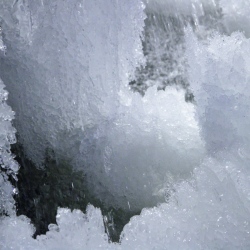
While the underbelly of Antarctica may not exactly be teeming with life, it supports viable ecosystems. Scientists have pulled up thousands of types of micro-organisms from Lake Whillans, a body of water buried 800m under the ice sheet. It proves the dark, cold bottom of Antarctica is not a sterile domain. It raises the tantalising prospect that similar conditions could exist elsewhere in the Solar System.
There are a number of icy moons around Jupiter and Saturn that would have a setting not dissimilar to that found in Lake Whillans. The haul of microbes is reported in Nature magazine this week by members of the US Wissard (Whillans Ice Stream Subglacial Access Research Drilling) project. They are not the first to acquire such samples; that was done by a Russian team at Vostok, another of the 400 or so subglacial lakes recorded under Antarctica. But what sets the American effort apart is the surety that its trove contained far fewer, if any, surface contaminants because of the ultra-clean drilling methods employed to get down through the ice to the lake body.
